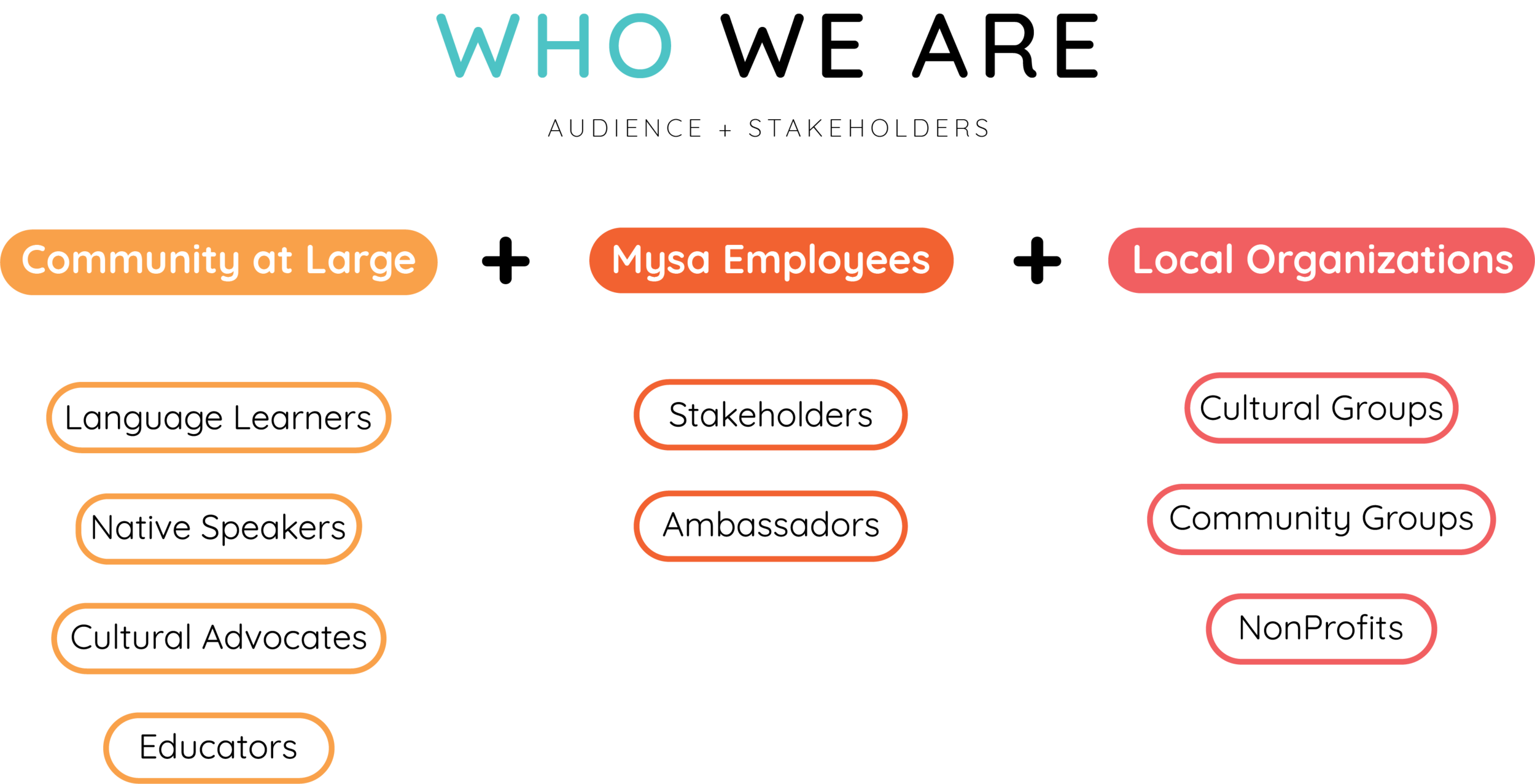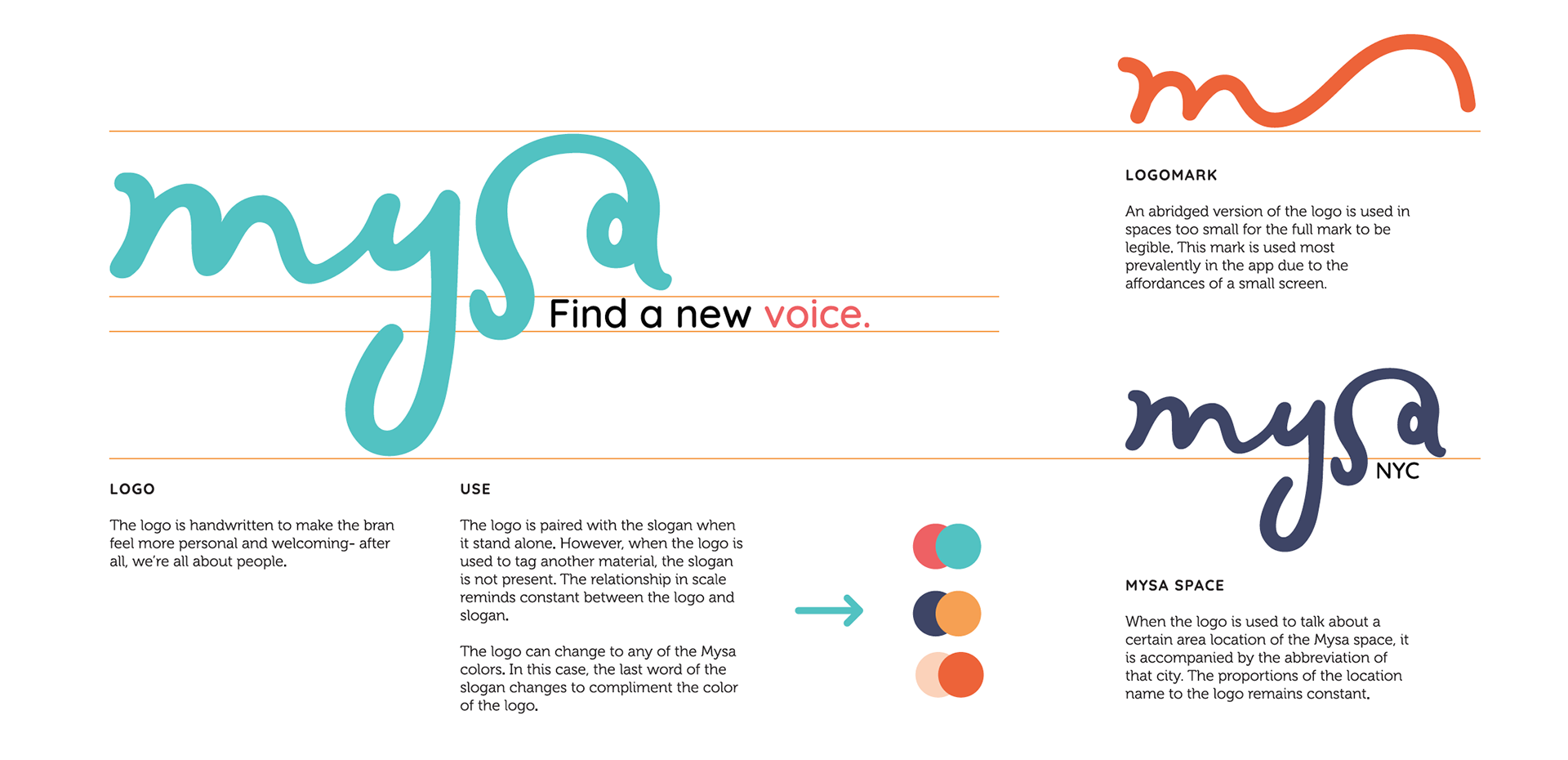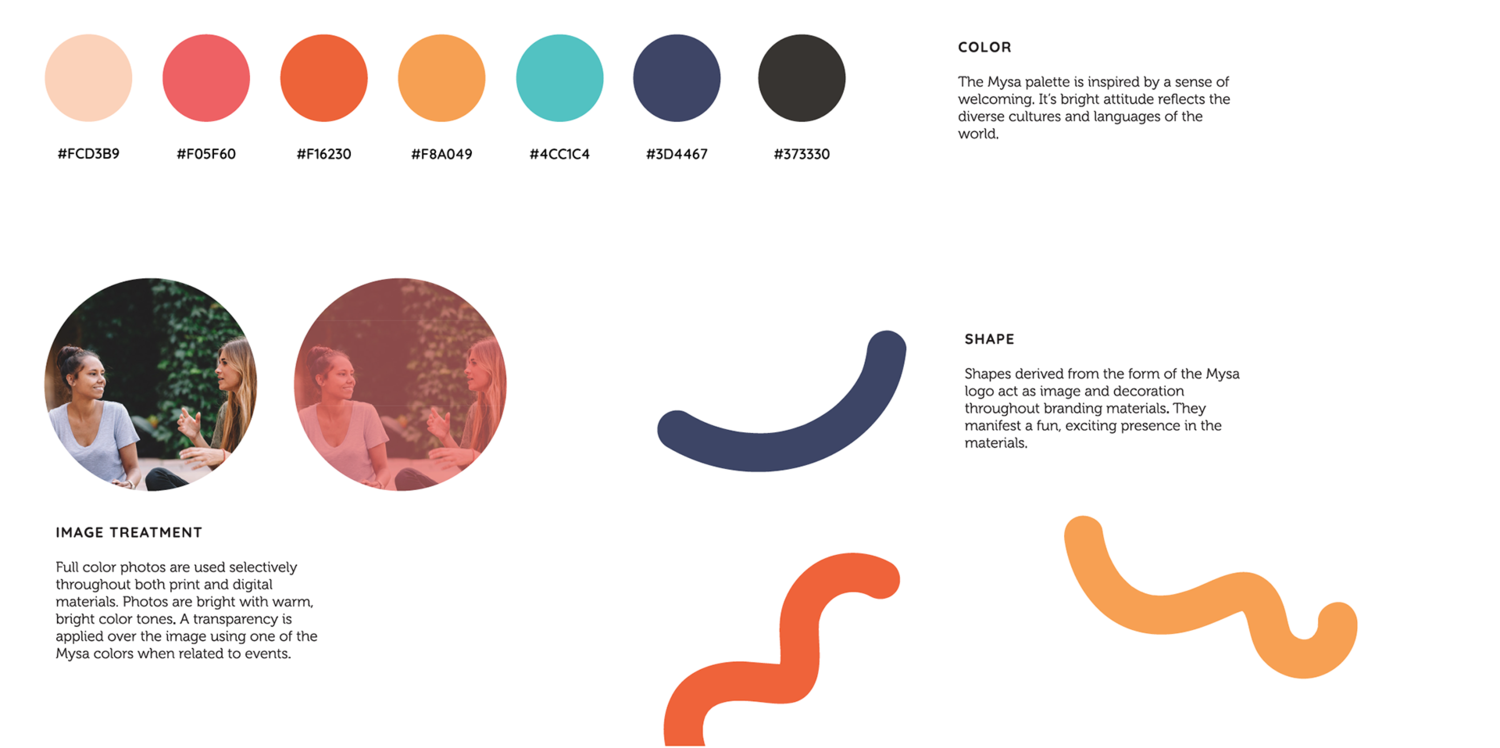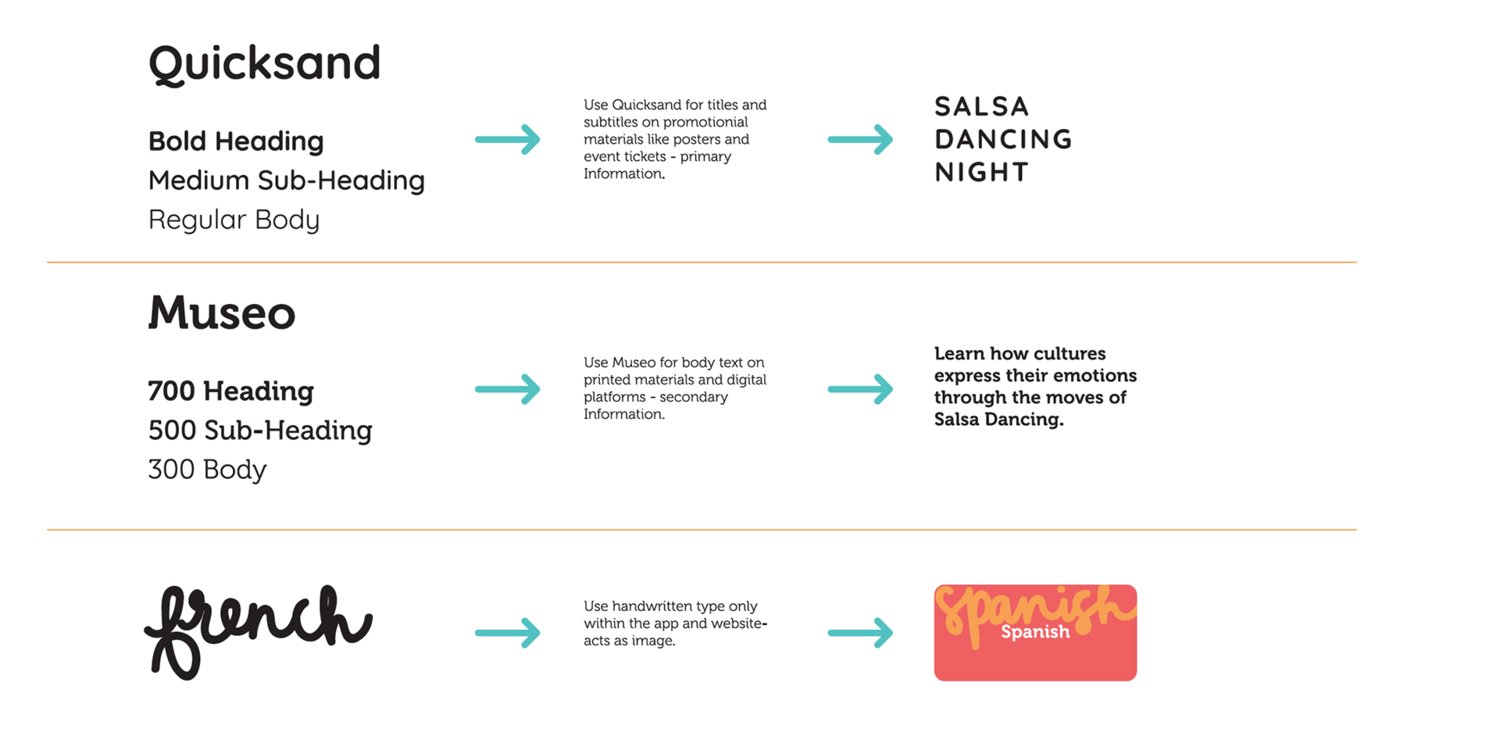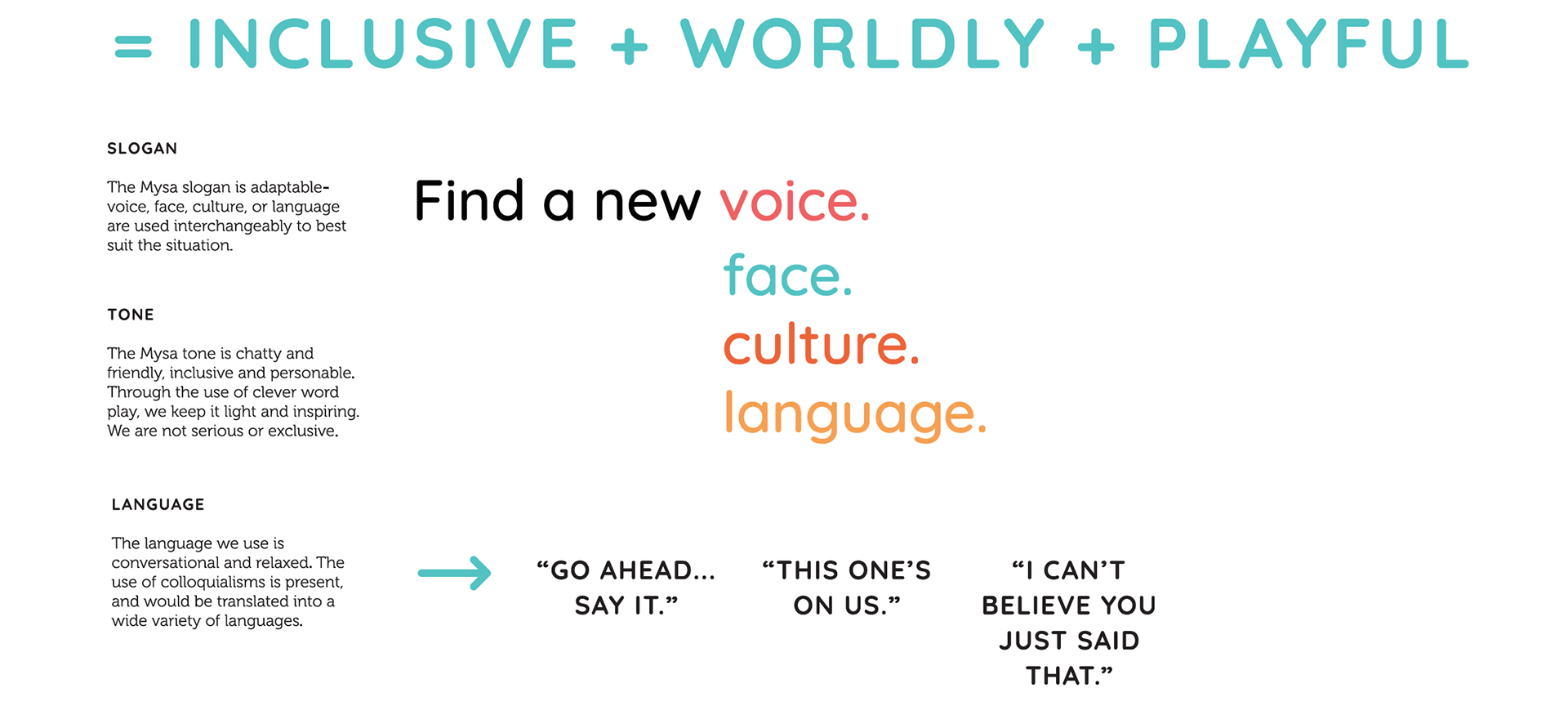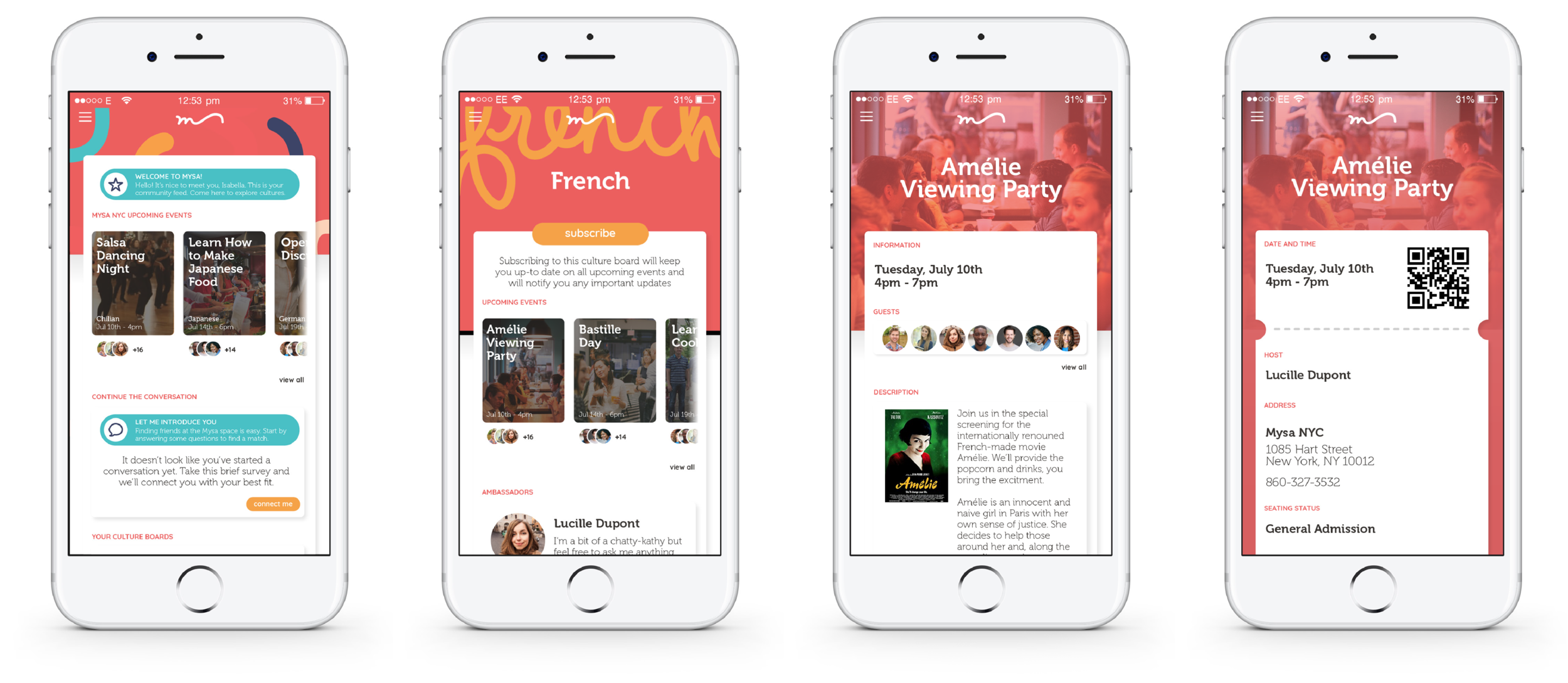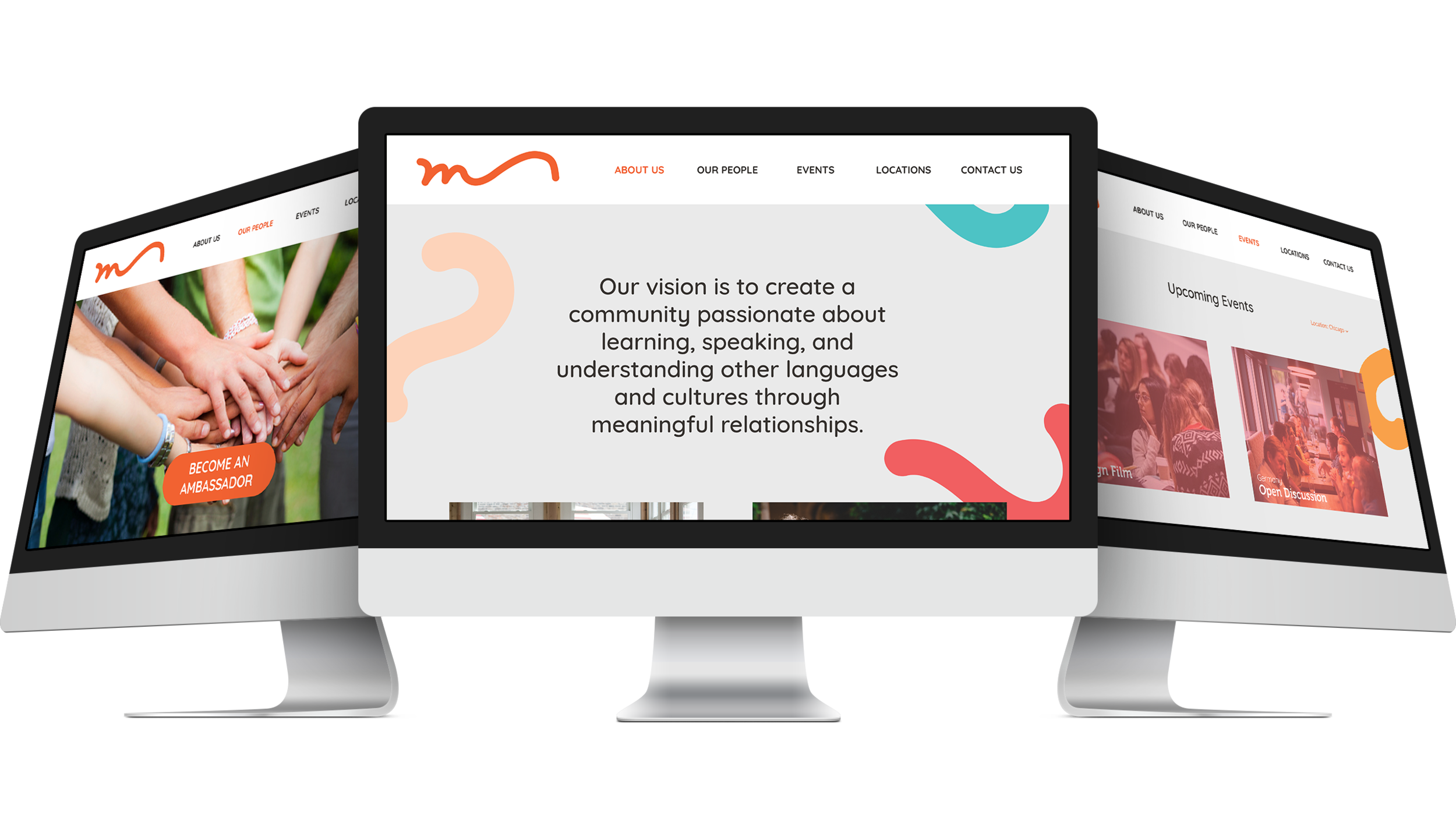Connecting Language Communities Through Conversation
Culture is the invisible bond that ties people together. Cultural values are the founding principles of our life: it shapes our behavior, thinking, and personality. By understanding cultures other than our own, we become more in tune with the rich social fabric of our world.
Unfortunately, most people in the United States are only exposed to different cultures in places like this. Most often taught through language courses, the world’s array of culture is studied through monotone lectures and quizzes in the classroom. There are limited opportunities for truly immersive learning, until now...
Welcome to Mysa, a new way to have face-to-face cultural experiences in your neighborhood. Mysa connects people from diverse backgrounds to improve cultural competency through practical speaking and in-person interaction all while creating community.
Research
The first step in our process was researching second language acquisition and speech anxiety, as well as language exchanges and language as a cultural artifact. We looked into the issues behind academic language courses, language exchange services, and plain language learning apps to help us determine what was missing in all of these services. We found the Socio-Educational Model of Second Language Acquisition Motivation model (below) to be very helpful in guiding our project. We then developed several personas that displayed the multitude of motivations that are involved in second language acquisition.
A plethora of personas
How it works
Our users are made up of a community of people who share a passion for learning about language and culture through authentic experiences. Our ambassadors are in-house staff that foster and encourage an environment that is welcoming, energetic, and comfortable. They serve as professional support for those engaged in conversation exchanges, as well as work with local organizations to plan cultural events. Local organizations collaborate with our staff to host cultural events in Mysa. By doing do, they can broaden their own communities and make new, meaningful connections.
Our mobile app is focused on connecting users for conversation exchanges. It allows users to connect to cultural communities and find more information about activities and events within the physical space. Our physical space is key to fostering a community of multiple cultures within a city. It also serves as a comfortable learning space where users would not feel anxious or nervous to speak in a foreign language. Our cultural events serve as both an introduction to our larger service and as community builders that focus on a culture as a whole, because culture is so much bigger than a language.
Branding
We wanted to create a brand that was welcoming, worldly, and cheerful, with cheeky undertones to add more character to our voice. It was clear from the beginning that we wanted to stay away from the clichés of language (using roots such as lex or lingua) and decided to rather focus on the atmosphere that we wanted our brand to create. It was important that our name be centered around a feeling, so we finally landed on Mysa—mee-sah (v) to be engaged in an activity that is comfortable or pleasurable.
The Mysa App
The Mysa app carries a great deal of the grunt work for Mysa. It is where users go to find conversation partners, schedule meetings, join language groups, and buy tickets for events. Beyond typical profile information, Mysa asks users to input cultural interests and conversation size preference to give users a customized and greater experience.
The space that brings us together
When discussing our idea, it became apparent early on that a physical space would be a key component of our proposal. With our research on speech anxiety and conversation exchanges, we felt that it was necessary to include a space that made people feel more comfortable and enhance a sense of community within Mysa. When ideating the space, we came up with key objectives that the space would fulfill and therefore make it a useful addition to our business.
We wanted our space to get away from the classical classroom environment, and provide a place where someone can feel comfortable learning a language. We also wanted our space to provide a place where someone can stay for a while without feeling guilty for taking up space. We envision that conversation would lightly guided by ambassadors within the space, to help people feel less intimidated by speaking a new language.
We also found it extremely important that our space be versatile and our furniture easily movable to create alternate layouts for cultural events. To the right is the general set up for everyday use of the space. This would vary from location to location, but the general concept would be similar to what is displayed on the right.
Website
The Mysa website serves as a home-base for all things Mysa. While most interactions occur on the app or within the space, the website hosts all the information about what Mysa is and encourages users to download the app and try it for themselves. We designed the website to be geared towards users who are ready to know, but not necessarily ready to act.
Cultural Events
Mysa events allow people to get together and perform a cultural activity within the Mysa space. Cultural activities are part of learning a language that aren’t really taught in formal classroom settings but are important in learning the whole language. These events are set up by language ambassadors, and are opportunities to collaborate with local cultural organizations and communities. These events are advertised on the app, as well as through printed posters, mail-outs, and word of mouth. These would also serve as a source of revenue for Mysa to help keep our language learning service free. These cultural events can range from culinary evenings, celebrating national holidays and events such as Oktoberfest, the Super Bowl or Day of the Dead, or teaching cultural quirk understanding (ex. tipping, eye contact, etc.).
In collaboration with Matt Rogers, Marcie Laird, Nicole Ferreira, and Jack Ratterree.
To see a more in-depth, comprehensive explanation of our work, click the button below!



